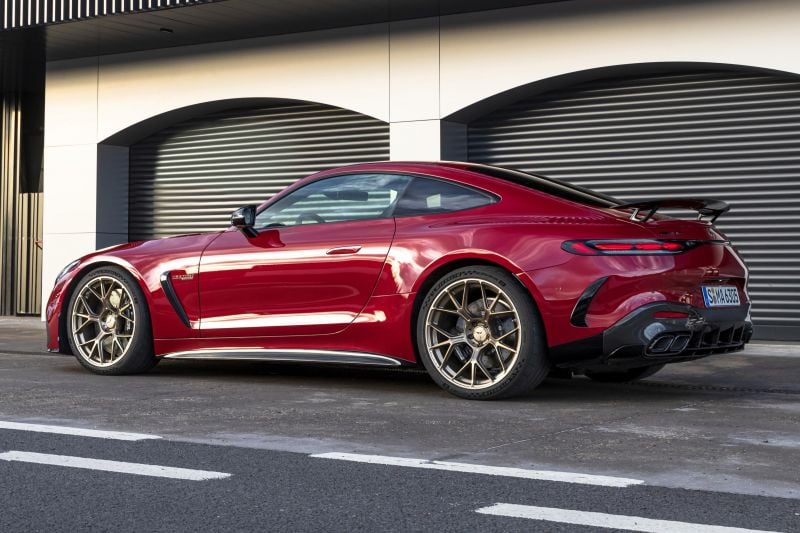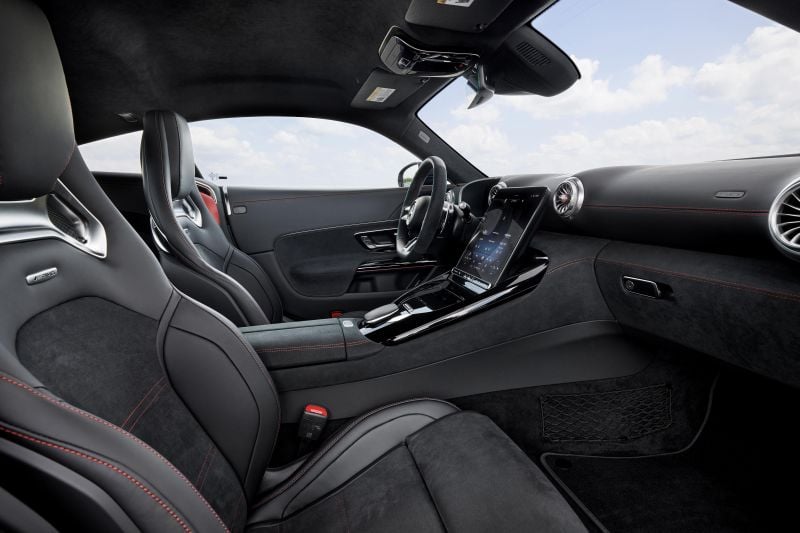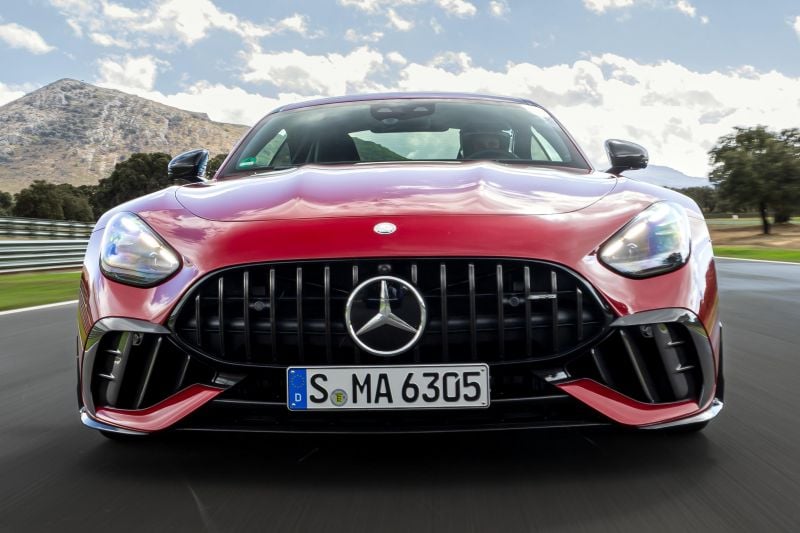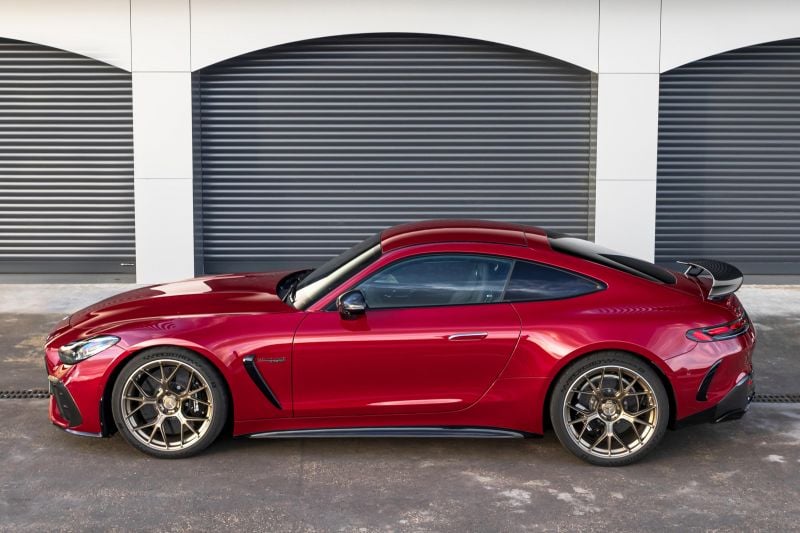The Mercedes-Benz SLS AMG and the first-generation Mercedes-AMG GT that succeeded it were ground-breaking cars for the three-pointed star.

Designed from a clean sheet by the German carmaker’s Affalterbach-based AMG go-faster division, both sportsters were purist’s delights.
In stark contrast to the rest of the Mercedes-Benz range, the SLS and GT were configured from the outset with an optimal mid/front-mounted engine and rear transaxle layout.
With the V8 engine (a 6.2-litre naturally aspirated unit in the SLS and a 4.0-litre twin-turbo in the GT) tucked well behind the front axle and the seven-speed dual-clutch automatic gearbox mounted in unison with the rear axle, the SLS and GT had a near-perfect 47:53 front/rear weight distribution.
The GT, in particular, was touted as a legitimate Porsche 911 rival, and the ultimate Black Series limited-edition was a scorchingly fast track weapon, blasting around the daunting Nurburgring Nordschleife in 6:43.616 – in the process eclipsing the likes of the hardcore Porsche 911 GT3 RS (992.1) and Lamborghini Aventador SVJ.

You might question why anyone within the halls of Mercedes-AMG would tamper with such a seemingly ideal recipe, but this time around – for the second-generation GT – everything has changed.
Mercedes-AMG spokesman Jochen Übler says the company has listened to its customers and what they wanted was a car with more day-to-day usability, bolstered by a bigger boot and the availability of rear seats.
This is basically what you get with the MkII GT, a more cossetting and roomy coupe that rides and drives with more compliance and refinement than its uncompromising predecessor.
In order to deliver on these slightly more mundane metrics, Mercedes-AMG has rethought the fundamentals, and the result is a markedly different package, with the engine now slung over the front axle and the transmission (a nine-speed auto with wet start-up clutch in lieu of the old seven-speed dual-clutch gearbox) housed directly behind the engine.

This format yields a less ideal 54:46 weight distribution over the axles, but Mercedes-AMG has been able to deliver on the requirements of a more spacious cabin and a larger boot (now capable of swallowing up to 675 litres), with the former GT’s rear-mounted gearbox no longer eating into the available space.
There will obviously be no drop-top variant of the GT this time around as the current R232 generation SL Roadster, which is based on the same AMG-developed platform, already fulfils that niche.
The second-generation GT 63 is due on sale in our market over the coming months, but there’s as yet no word on when the sharpened GT 63 Pro 4Matic+ Coupe will land locally.
The latter is the subject of this test, following the international launch of the new flagship variant at the Ascari Race Resort in southern Spain.

Although retaining the daily usability of the standard GT, the Pro adds track-worthy credentials to the donor car, with particular focus on its enhanced cooling and aero package.
You also get bigger front brakes (420mm carbon-ceramic discs), while grippy Michelin Pilot Sport Cup 2R semi-slick tyres are offered as a no-cost option.



